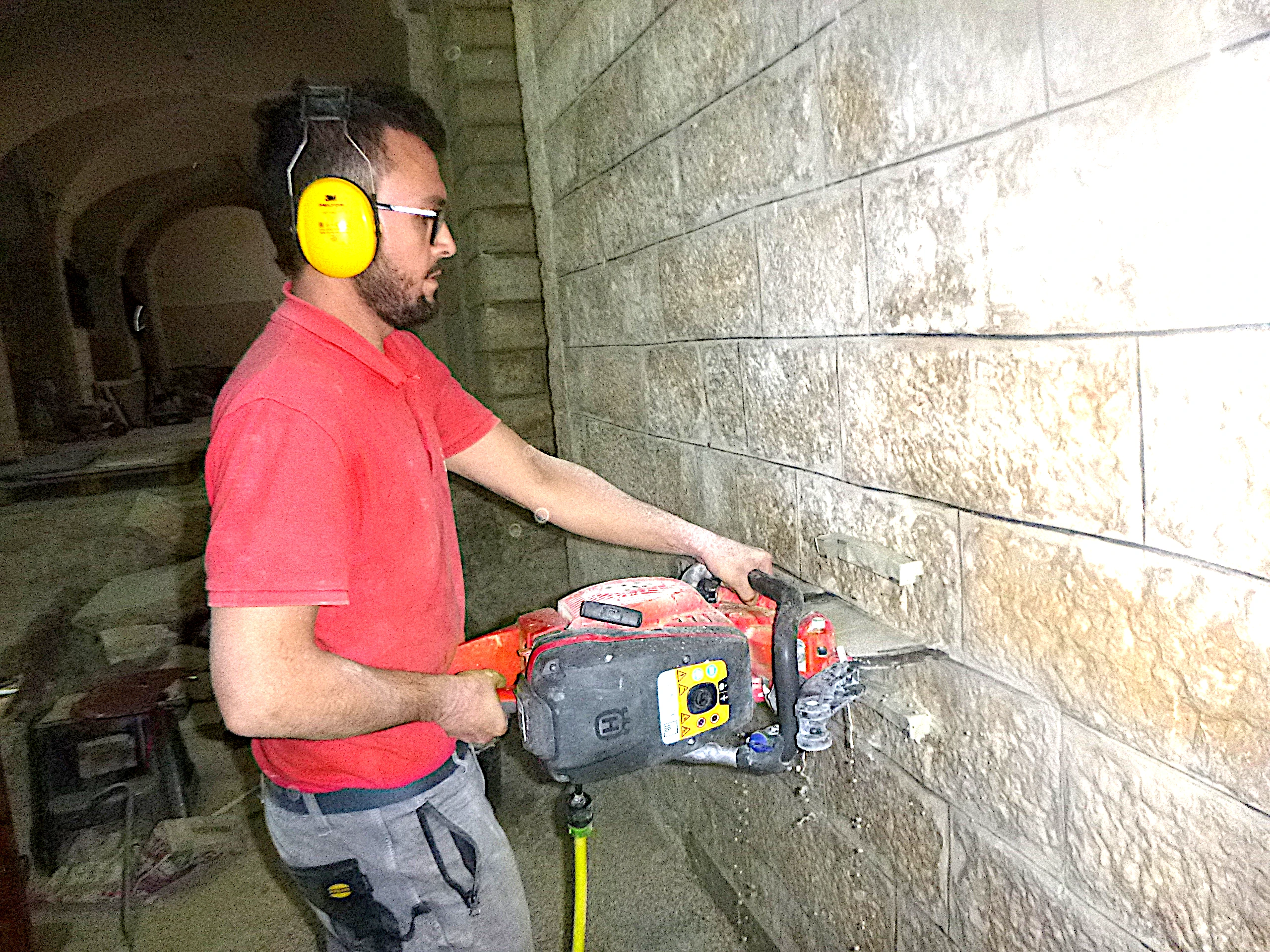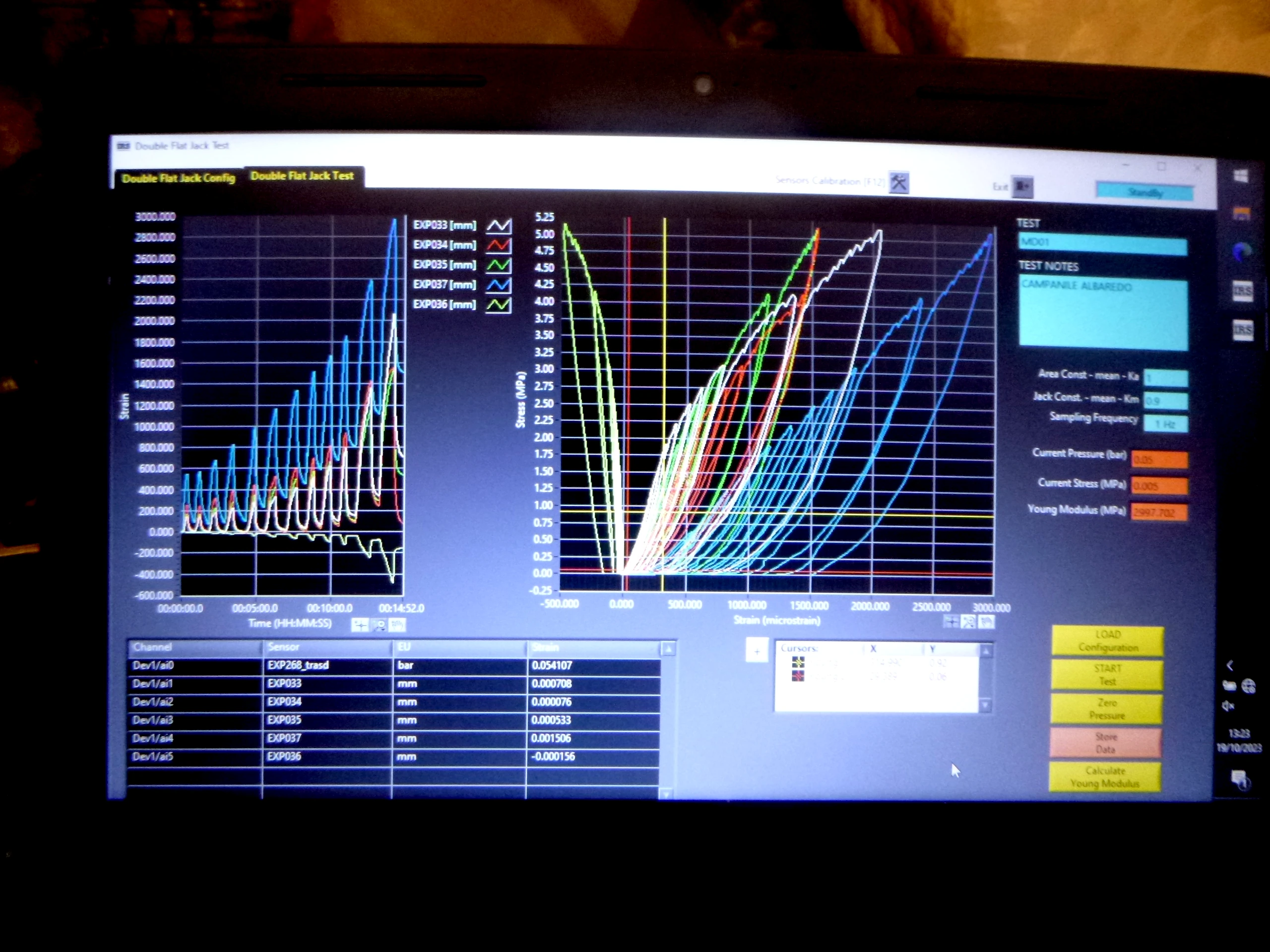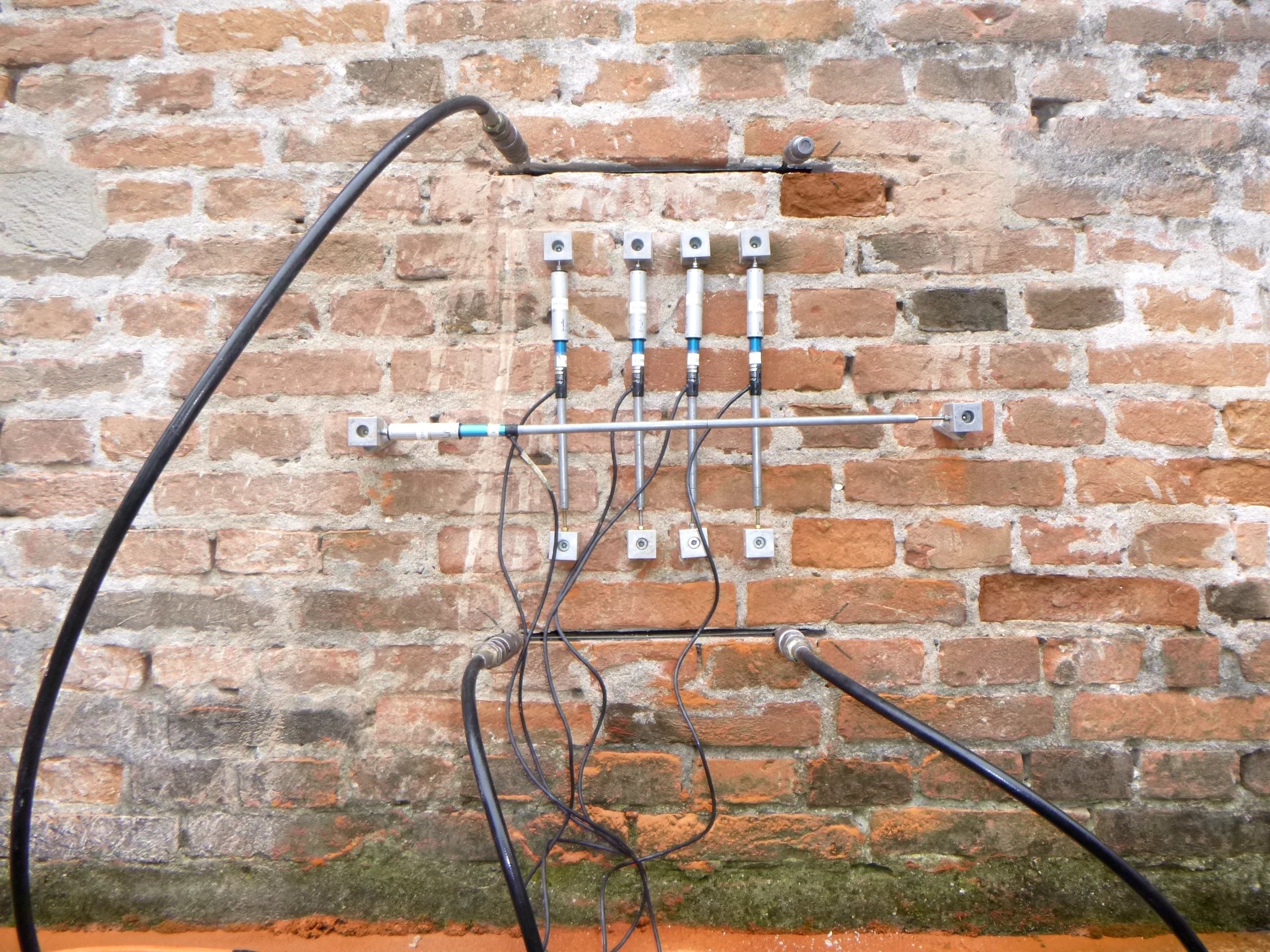


Double flat jack test
The double flat jack test allows to estimate the elastic limit and the deformability characteristics of a representative sample of masonry under compression. Two parallel incisions, preferably made along the mortar joints and about 50-70 cm apart, allow the insertion of two flat jacks connected to the hydraulic circuit of a manual pump.
The so isolated sample of masonry is subjected to cycles of loading and unloading with increasing levels of stress, and its deformations are measured using four vertical and one horizontal displacement transducer. The deformations measured are plotted versus the pressure applied to the flat jack, allowing the modulus of elasticity to be determined and the load/deformation curve of the tested masonry panel to be plotted.
Reference standards: ASTM C 1197–14a; RILEM TC177 MDT.D.5.
